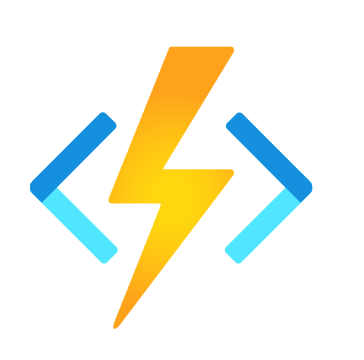Getting Started with Azure Functions
- WeeklyTechReview

- Jan 6
- 3 min read
Introduction
Azure Functions offers a serverless compute experience, allowing developers to run code on-demand without worrying about the underlying infrastructure. It’s an excellent choice for scenarios requiring event-driven logic. In this blog, we’ll explore what Azure Functions are, discuss their real-life use cases, and walk you through creating your first serverless function.
What are Azure Functions?

Azure Functions is a serverless compute service that enables you to run small pieces of code, known as "functions," in response to events. Key features include:
Event-Driven: Triggers from HTTP requests, timers, queues, and more.
Pay-as-You-Go: Only pay for the compute time you consume.
Language Support: Write functions in C#, JavaScript, Python, Java, and more.
Project Use Cases
Data Processing: Process data in real-time from IoT devices or logs.
Task Automation: Trigger workflows based on timers or events.
API Backend: Create lightweight APIs for mobile or web applications.
Notifications: Send emails or messages when specific events occur.
For instance, an e-commerce platform can use Azure Functions to send order confirmation emails when a new purchase is made.
Step-by-Step Project: Create Your First Azure Function
Prerequisites
An active Azure account. (Sign up for free at Azure Free Account)
Basic knowledge of programming and cloud concepts.
Step 1: Sign in to Azure Portal
Go to Azure Portal.
Log in with your credentials.
Step 2: Navigate to “Azure Functions”
In the Azure Portal, click on Create a Resource.
Search for Function App and select it.
Click Create.
Step 3: Configure the Basics
Subscription: Choose your active subscription.
Resource Group: Create a new resource group or use an existing one.
Function App Name: Provide a unique name (e.g., MyFirstFunctionApp).
Region: Select a region (e.g., West Europe or East US).
Runtime Stack: Choose the runtime (e.g., .NET Core, Node.js, Python).
Operating System: Select Windows or Linux.
Step 4: Configure Hosting
Storage Account: Create a new storage account or use an existing one.
Plan Type: Select Consumption Plan for a serverless experience or Premium Plan for more control.
Step 5: Deploy the Function App
Review your configurations and click Create.
Wait for the deployment to complete.
Step 6: Create a Function
Navigate to your Function App in the Azure Portal.
Under Functions, click on + Add.
Select a trigger type (e.g., HTTP Trigger).
Configure the function's details (e.g., authorization level, name).
Step 7: Write Your Function Code
using System.IO;
using Microsoft.AspNetCore.Mvc;
using Microsoft.Azure.WebJobs;
using Microsoft.Azure.WebJobs.Extensions.Http;
using Microsoft.AspNetCore.Http;
using Newtonsoft.Json;
public static class MyFirstFunction
{
[FunctionName("MyFirstFunction")]
public static IActionResult Run(
[HttpTrigger(AuthorizationLevel.Function, "get", "post", Route = null)] HttpRequest req)
{
string name = req.Query["name"];
return new OkObjectResult($"Hello, {name}. Welcome to Azure Functions!");
}
}Go to the Code + Test tab for your function.
Write or paste your code. For example, a simple HTTP-triggered function in C#:
Step 8: Test Your Function
Get the Function URL from the Overview tab.
Paste the URL into your browser or use a tool like Postman to test it.
Append a query parameter (e.g., ?name=Azure) to see the personalized response.
When to Use Azure Functions
Best Scenarios:
Event-driven applications.
Microservices architectures.
Task automation or scheduled jobs.
APIs with intermittent usage patterns.
Limitations:
Execution time constraints (default is 5 minutes for Consumption Plan).
May require integration with other services for stateful workflows.
Conclusion
Azure Functions is a powerful serverless solution that simplifies the development and deployment of event-driven applications. By creating your first function, you've taken a significant step toward leveraging the serverless paradigm for building scalable and cost-effective solutions.
Next Steps: Experiment with different triggers (e.g., Timer, Queue) to expand your knowledge. Stay tuned for the next blog in the series: Azure Storage Accounts – Managing Data Efficiently.
If this blog inspired you to create your own serverless applications, share your experience or unique use cases in the comments below. Let’s continue exploring the Azure ecosystem together!









Comments